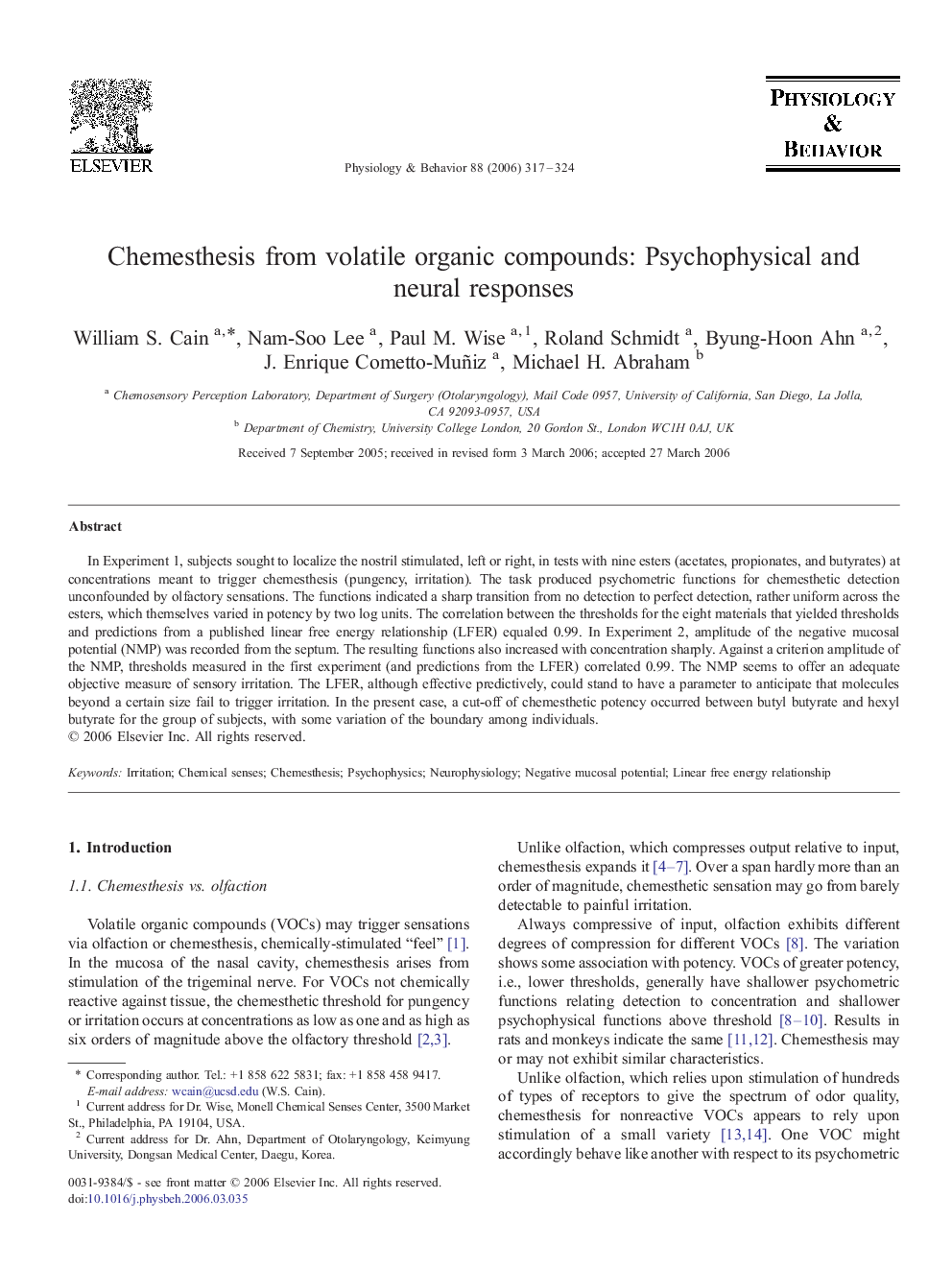| Article ID | Journal | Published Year | Pages | File Type |
|---|---|---|---|---|
| 2846227 | Physiology & Behavior | 2006 | 8 Pages |
In Experiment 1, subjects sought to localize the nostril stimulated, left or right, in tests with nine esters (acetates, propionates, and butyrates) at concentrations meant to trigger chemesthesis (pungency, irritation). The task produced psychometric functions for chemesthetic detection unconfounded by olfactory sensations. The functions indicated a sharp transition from no detection to perfect detection, rather uniform across the esters, which themselves varied in potency by two log units. The correlation between the thresholds for the eight materials that yielded thresholds and predictions from a published linear free energy relationship (LFER) equaled 0.99. In Experiment 2, amplitude of the negative mucosal potential (NMP) was recorded from the septum. The resulting functions also increased with concentration sharply. Against a criterion amplitude of the NMP, thresholds measured in the first experiment (and predictions from the LFER) correlated 0.99. The NMP seems to offer an adequate objective measure of sensory irritation. The LFER, although effective predictively, could stand to have a parameter to anticipate that molecules beyond a certain size fail to trigger irritation. In the present case, a cut-off of chemesthetic potency occurred between butyl butyrate and hexyl butyrate for the group of subjects, with some variation of the boundary among individuals.
